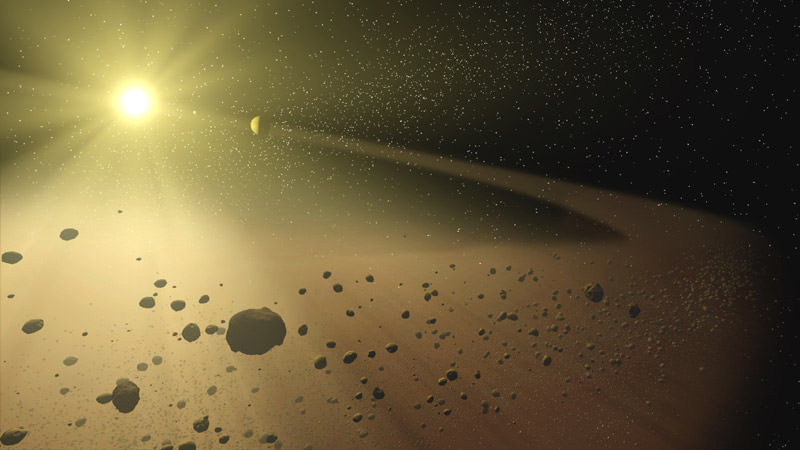Universe Today | Tammy Plotner | 2011 July 08
Will 3552 Don Quixote Escape from the Solar System? - Suryadi Siregar“Tell me thy company, and I’ll tell thee what thou art…” In this case it is Asteroid 3552 Don Quixote – one of the most well-known of Near Earth Asteroids. You may know its name, but did you know it has possible cometary origin? It may very well be one of the Jupiter-Family Comets just waiting for its turn to be ejected from our own solar system.
Asteroid 3552 Don Quixote was discovered by Paul Wild, on September 26, 1983 and has recently been part of a study where it has been virtually cloned one hundred times into hypothetical asteroids to further understand orbital evolution of bodies of its type. It is commonly assumed that NEAs like Quixote may have originated from a parent body between Mars and Jupiter, where they smashed into existence due to the larger planet’s gravity. From there the rocky debris took up positions at libration points – some pieces becoming Trojan asteroids and others Main Belt. However, current theory points to evidence that bodies like 3552 may have been small conglomerates from the solar nebula, unable to form into a larger mass due to Jupiter’s influence. Like past models, these asteroids collided numerous times from planetary perturbation to become what and where they are today.
“The numbers and masses of protoplanets and the time required to grow a protoplanet depend strongly on the initial conditions of the disk. The elasticity of the collision, does not significantly affect planetesimal growth over longtime scale. Most of the asteroids move between Mars and Jupiter and collisions occur frequently.” says Suryadi Siregar. “These collisional destructions occurred so often during the lifetime of the Solar System, that practically all the asteroids we now see are fragments of their original parent bodies. Some may be found in unstable zone like those of the Kirkwood gaps, in which they became the sources of Apollo-Amor-Aten asteroids (AAAs). This group is the main reference in the classification of NEAs.”
What makes Don Quixote, well… a little bit different? In this case it’s albedo and spectral signature. Its physical characteristics don’t quite fit in with our current understanding of cometary nuclei, as well as its orbital evolution in comparison with our solar system motion. Physically it is an asteroid but dynamically it is a comet…. A body in search of a collision on a grand scale. Through the use of theoretical models, the study has found that a percentage of Quixote clones will eventually find their way into the Sun, but with a bit of luck, asteroid 3552 will escape a fiery ending.
According to planetary astrophysicist Suryadi Siregar: “Asteroid 3552 Don Quixote is a clear example of the complexity of motion that can be exhibited by purely gravitating bodies in the Solar System. All planets have key roles to play in the evolution of 3552 Don Quixote. This asteroid also serves as an example of behavior chaotic that can cause asteroid to migrate outward, and may be followed by escaping from the Solar System.”
What can we say besides, “One man scorned and covered with scars still strove with his last ounce of courage to reach the unreachable stars; and the world was better for this…”
- arXiv.org > astro-ph > arXiv:1107.1024 > 06 Jul 2011

